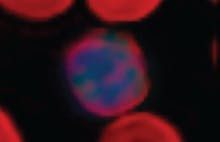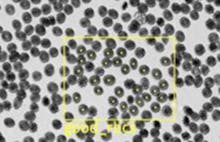Eosinophils
Definition, Abnormal Ranges and CausesEosinophils Definition
An eosinophil is a type of white blood cell. It is a granulocyte, which means it releases granules of enzymes to fight foreign substances and infections. Nearly every system of the body uses eosinophils in some way.
Two of their most important functions are related to the immune system. The first is killing invading germs such as parasites, bacteria or viruses. The second is promoting inflammation. This process helps the body to isolate and control a disease or allergic reaction.
Absolute Eosinophils Count
Eosinophils usually make up between 0-6% of the white blood cells. An absolute blood cell count is an expression in blood tests, and means that the number of blood cells is given as an absolute number, rather than as a percentage.
The absolute eosinophil count can be worked out by multiplying the total white blood cell count against the percentage of this count which are also eosinophils. This means if the white blood cell count is 8000/uL, and 5% of the white blood cells are eosinophils, the absolute count of eosinophils would be 400/uL (8000 x 0.05).
Causes Of Abnormal Eosinophils Count
A high eosinophil count can indicate that the body is producing lots of new eosinophils to try to fight a bacteria, virus, or parasite. Therefore, high eosinophil count can be indicative of an infection.
A high eosinophil count could be caused by eosinophilic granulomatosis with polyangiitis, also called Churg Strauss syndrome. This condition is characterized by asthma, a high eosinophil count, and inflammation of small to medium sized blood vessels (vasculitis).
A high count could also be caused by an allergic disorder such as asthma, eczema, hay fever, or allergies to substances or certain medications. High eosinophil count can indicate certain autoimmune disorders, Cushing’s disease (a condition caused by heightened cortisol levels), or blood disorders such as leukemia.
What Is The Treatment For High Eosinophils?
Treatment for high eosinophils depends on the cause of the condition. If the eosinophilia is related to an allergic reaction, the most simple fix is to avoid the drug, food, or other substance which is causing this reaction.
When medication takes away the job of the eosinophils, this helps the body stop overproducing them. Sometimes medications such as anti-infectives, anti-inflammatories, or corticosteroids may relieve high eosinophil count.
What Is Eosinophilia?
Eosinophilia is the condition of having too many eosinophils in the blood. Usually, a patient will be diagnosed with eosinophilia if their absolute eosinophil count is higher than 500/uL.
Eosinophilia can either be tissue eosinophilia, which is abnormally high levels of eosinophils at the specific site of an infection or inflammation, but the bloodstream levels are normal. Alternatively, blood eosinophilia is high levels of eosinophilia through the entire bloodstream.
Eosinophilia can usually be detected by a blood test, although tissue eosinophilia can be found in mucus, fluid or tissue samples.
An absolute eosinophil count higher than 1500/uL that lasts for several months is called hypereosinophilia.
Eosinophilia Causes
There are several diseases that can be the culprit for blood or tissue eosinophilia. The eosinophilia develops when too many eosinophils are produced in the bone marrow, or too many are sent to a specific site of infection.
Conditions that may cause these things to happen include allergies, parasites, fungal infections, adrenal conditions, skin disorders, autoimmune disorders, endocrine disorders, or tumors.
The specific disorders that may be underlying include roundworm infection, allergy to a certain drug or food, asthma, hay fever, eczema, esophagitis, Crohn’s disease, eosinophilic granulomatosis with polyangiitis, leukemia and Hodgkin’s lymphoma.
The underlying causes of eosinophilia can vary widely. The treatment will differ significantly depending on the underlying condition which has caused eosinophilia to develop.
Discover Sight's Automated Hematology Analyzer
Disclaimer: The content of this knowledge post intends to provide general information related to topics that are relevant to blood diagnostics and may not be used in relation to the operation of Sight OLO. For detailed information on the diagnostic parameters and specifications of Sight OLO, please refer to the official Operator's Manual.


